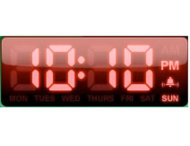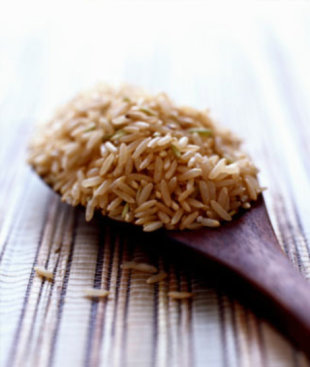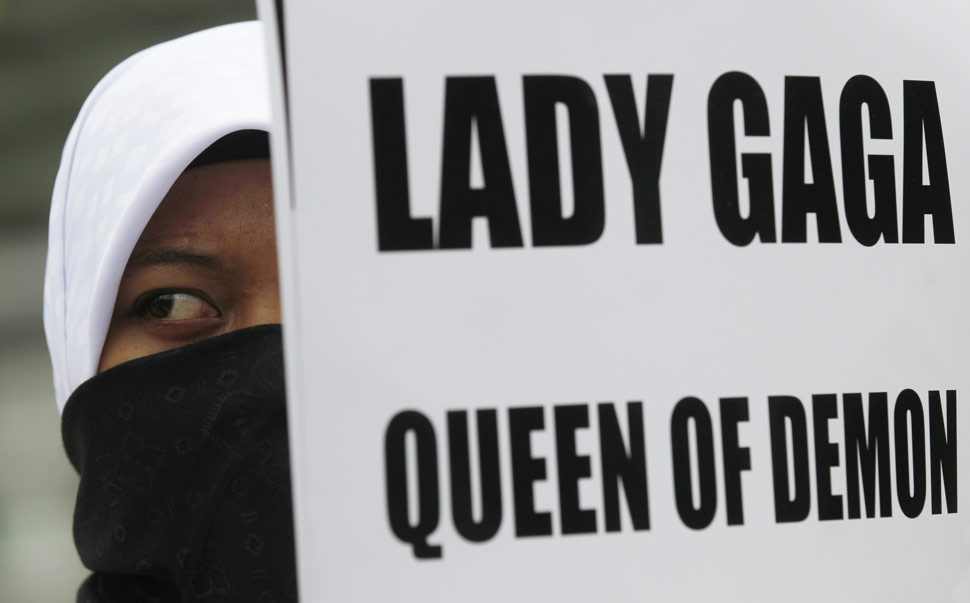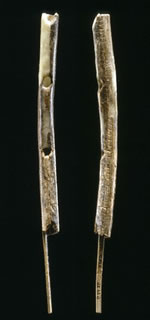
Here's how to make eight hours of sleep a
dream come true (before those dark circles get any more noticeable).
Step 1: Hit the Sheets
We know, we know -- the dog needs a bath, you've got 124 e-mails to
answer, and you have to do two loads of laundry before you can call it a
day. But here's the thing: The chores can wait. "Adequate sleep is as
essential to a woman's health as eating and exercise. Stop feeling
guilty about getting it," says Lawrence Epstein, MD, author of
The Harvard Medical School Guide to a Good Night's Sleep.
Is that really possible? Yes, if you prioritize what has to get done
right now, and what can wait. Try this simple exercise: "About an hour
before bed, type up a to-do list of all the things you need to
accomplish, print out the list, then ball it up and throw it in a
wastebasket," says Patricia Smith, coauthor of
Sleep Disorders for Dummies.
"The physical act symbolizes that you don't have to worry about these
things until morning -- they'll all be there safely on your computer and
you can deal with them then."
Step 2: Do Z Math
"Most adults require seven to nine hours of sleep a night," says Helene
A. Emsellem, MD, medical director of the Center for Sleep & Wake
Disorders in Chevy Chase, Maryland, and author of
Snooze...Or Lose!
Since constant catch-up can make it hard to determine exactly how much
your body needs, figure it out on your next vacation, when you're miles
away from your alarm clock and jam-packed schedule. "You should reach a
point where you're going to bed at the same time, rising at the same
time, and feeling rested," says Clete Kushida, MD, PhD, director of the
Center for Human Sleep Research at Stanford University. "That's your
optimal sleep length." Once back home, make it a goal to stick to that
amount, since skimping even a little can have a huge effect on your mood
and concentration: "Studies have shown that if you cut back by about an
hour just for one night, your alertness decreases by up to one-third,"
says Dr. Kushida.
Step 3: Zap Your Rest Robbers
Okay, you're ready to get your eight hours, but something else is
keeping you up. In a word: pain. Backache. Headache. Cramps. "Pain is
the number-one reason why people can't sleep," says Smith. If
over-the-counter meds don't help, see your doctor. It sounds like a
no-brainer, but, experts say, you'd be surprised how many people try to
tough it out.
Other common sleep stoppers are easier to fix. For one thing, kick your
kids, pets, computers, and any work-related reading out of bed.
"Americans turn their bedrooms into Grand Central Station," says Smith.
"Clear out the clutter." If your partner's snoring is the problem, turn
on some white noise, such as a fan, to help drown out the racket. You
should also send him to a sleep doctor. Loud snoring and twitching can
be symptoms of serious disorders, including sleep apnea.
Step 4: Don't Skimp on Sleep in Order to Fit in Exercise
"People often think the choices are between two things that are
healthy -- sleep in or get up early to exercise," says Dr. Epstein.
"You need the exercise and you need the sleep, but you probably don't
need those back-to-back Entourage reruns." Or all that time spent
surfing the Internet. See, we just bought you an extra two hours!
Step 5: Think Like a Kid
Yep, even adults need a routine. Here's yours (no binkie required):
• Hit the sack within 30 minutes of the same time each night, and try to
wake up at about the same time each day -- even on weekends. Experts
swear it works.
• A before-bed routine can also help you chill. Try a hot shower with a
favorite, scented body wash; some evidence suggests that when your body
temperature is elevated that way and begins dropping, it has a calming
effect that can help you sleep more soundly, explains Dr. Epstein.
• Follow your tub time with a single chapter of a relaxing book, or listen to a few soothing songs on an iPod playlist.
• Put on a pair of socks before you hop in bed: According to that
Swedish study, the blood vessels in the feet naturally dilate as the
body begins to relax, and warming your feet facilitates the process.
• Finally, set the thermostat to about 68 degrees, close the blinds to block out light, and pull up the covers. Sweet dreams!






 The
"death tax" is a tax that the government levied on the estate
of the deceased - but what happens if that person is resurrected as a
zombie? Is he still dead? Should a zombie pay taxes?
The
"death tax" is a tax that the government levied on the estate
of the deceased - but what happens if that person is resurrected as a
zombie? Is he still dead? Should a zombie pay taxes? An enterprising young fellow named Eric Simons secretly lived at AOL
headquarters for two months. He was given a badge while working a short
stint at AOL's Imagine K12 incubator event for young education
entrepreneurs. He really enjoyed his visit, so he just stayed, and his
badge kept working. He used the company showers and gym, slept on the
company sofas, and worked on his business plan until he was finally
busted by a security guard. Having since secured $50K for his startup,
ClassConnect, he has found rental accommodation. Daniel Terdiman wrote
for CNet:
An enterprising young fellow named Eric Simons secretly lived at AOL
headquarters for two months. He was given a badge while working a short
stint at AOL's Imagine K12 incubator event for young education
entrepreneurs. He really enjoyed his visit, so he just stayed, and his
badge kept working. He used the company showers and gym, slept on the
company sofas, and worked on his business plan until he was finally
busted by a security guard. Having since secured $50K for his startup,
ClassConnect, he has found rental accommodation. Daniel Terdiman wrote
for CNet:
 Having spent several months legitimately working in the building, often
quite late, Simons had noticed that although there were security guards
with nightly rounds, there were at least three couches that seemed
outside those patrols. Plus, they looked fairly comfortable. He claimed
them.
Having spent several months legitimately working in the building, often
quite late, Simons had noticed that although there were security guards
with nightly rounds, there were at least three couches that seemed
outside those patrols. Plus, they looked fairly comfortable. He claimed
them.





 Here's how to make eight hours of sleep a
dream come true (before those dark circles get any more noticeable).
Here's how to make eight hours of sleep a
dream come true (before those dark circles get any more noticeable).






 World’s
first artificially prepared burger will become a part of our food in
next few months. This burger is being prepared by artificial meat with
the help of steam cells technology in the laboratory. At the moment more
than thirty thousand dollars have been invested in producing it in a
laboratory of Holland. But it is expected that when production of burger
will increase, price of it will be reduce.
World’s
first artificially prepared burger will become a part of our food in
next few months. This burger is being prepared by artificial meat with
the help of steam cells technology in the laboratory. At the moment more
than thirty thousand dollars have been invested in producing it in a
laboratory of Holland. But it is expected that when production of burger
will increase, price of it will be reduce.









 Researchers
have identified the earliest music instrument: a 42,000-year-old flute
carved from mammoth ivory, found at the Geissenkloesterle Cave in Germany.
Researchers
have identified the earliest music instrument: a 42,000-year-old flute
carved from mammoth ivory, found at the Geissenkloesterle Cave in Germany. Earliest music instruments found
Earliest music instruments found



